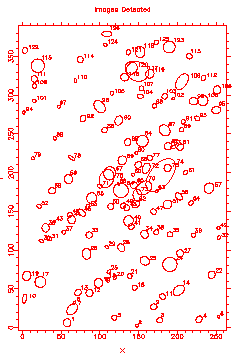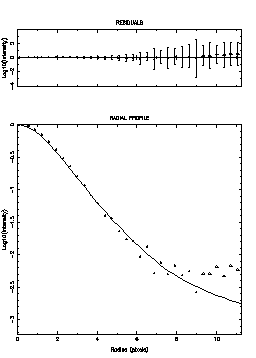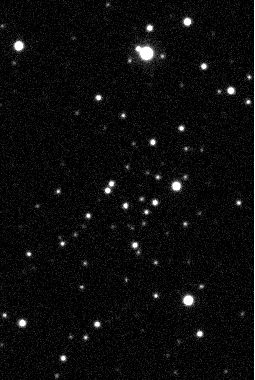PISA demonstration
This page displays various snapshots and explanations of the PISA
rolling demonstration
"pisa_demo".
PISA is a group of applications (a package) that deal with the
location and parameterisation of objects on an image. The core of
this package is an application called PISAFIND. This analyses 2-D
images searching for groups of connected pixels above a given
threshold. It extracts these pixels and parameterises them into
various measures of position, intensity and ellipticity. In
crowded fields merged objects can be deblended. PISAFIND is based
on the APM IMAGES program that was written by Mike Irwin of the
University of Cambridge. PISA is documented in
SUN/109.

A run of PISAFIND on the image displayed above
produces a results file, that
can be plotted as below.

Note the object "deblending" that has occurred in the crowded
central regions.
PISA can use an analytic stellar profile to fit stars.

The parameters produced by the fit can subsequently be
used to fit all the stars on a frame (useful if they are
low-intensity).
The results from PISAFIND can also be used to generate
model data to which noise can be added.

PISA can help in the classification of objects. This
uses a peakedness measure (that essentially tells you how
stellar an object is) together with other parameters that
are intensity invariant (at least in principle). The
example shown here simply uses a cut in peakedness to
separate out stellar (red) from non-stellar (green)
objects.

|